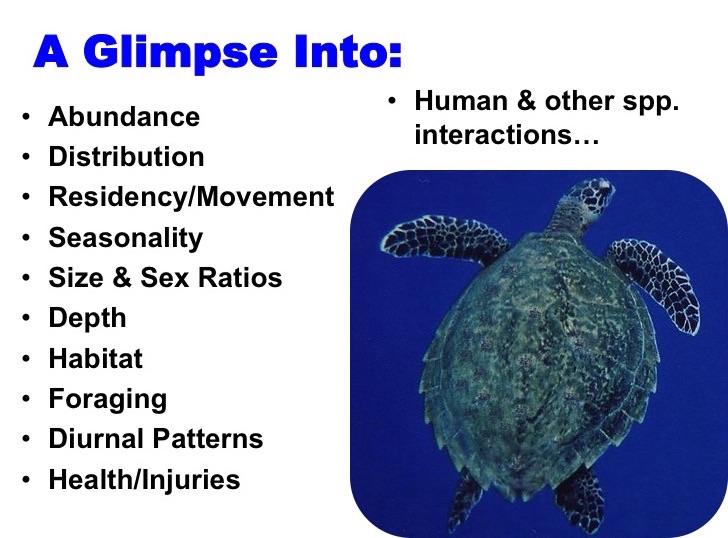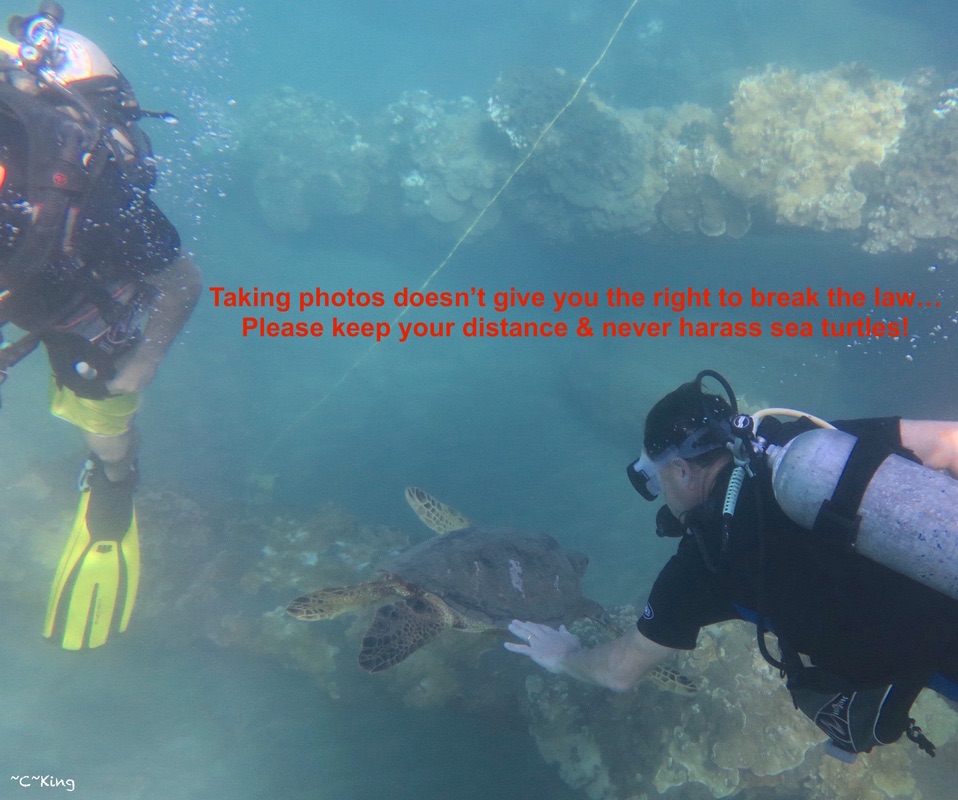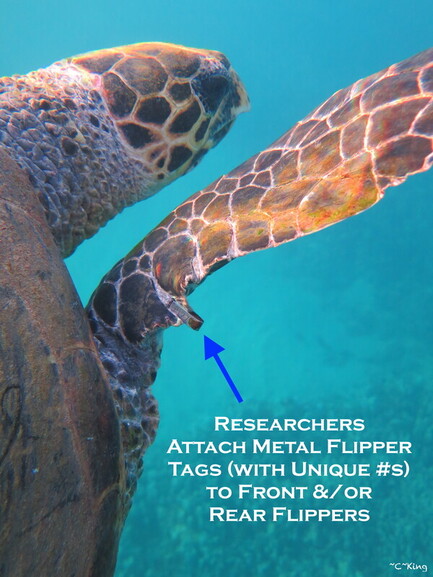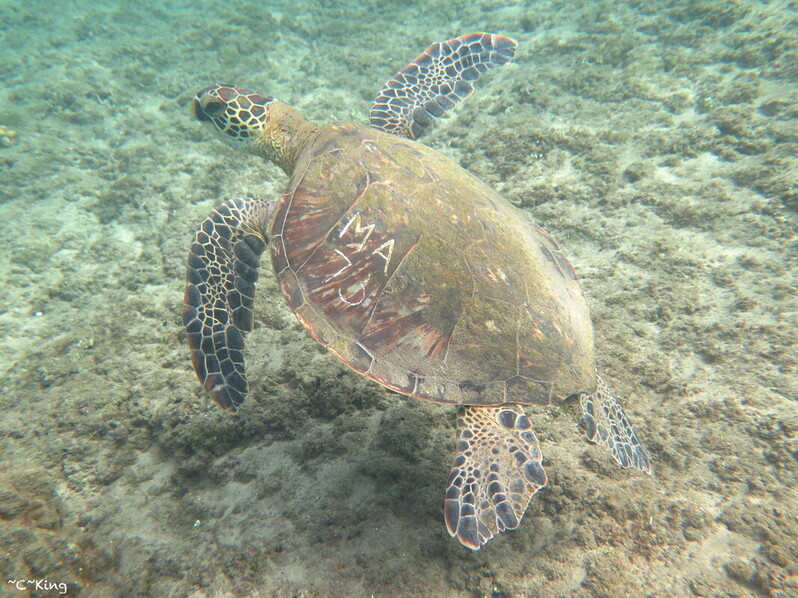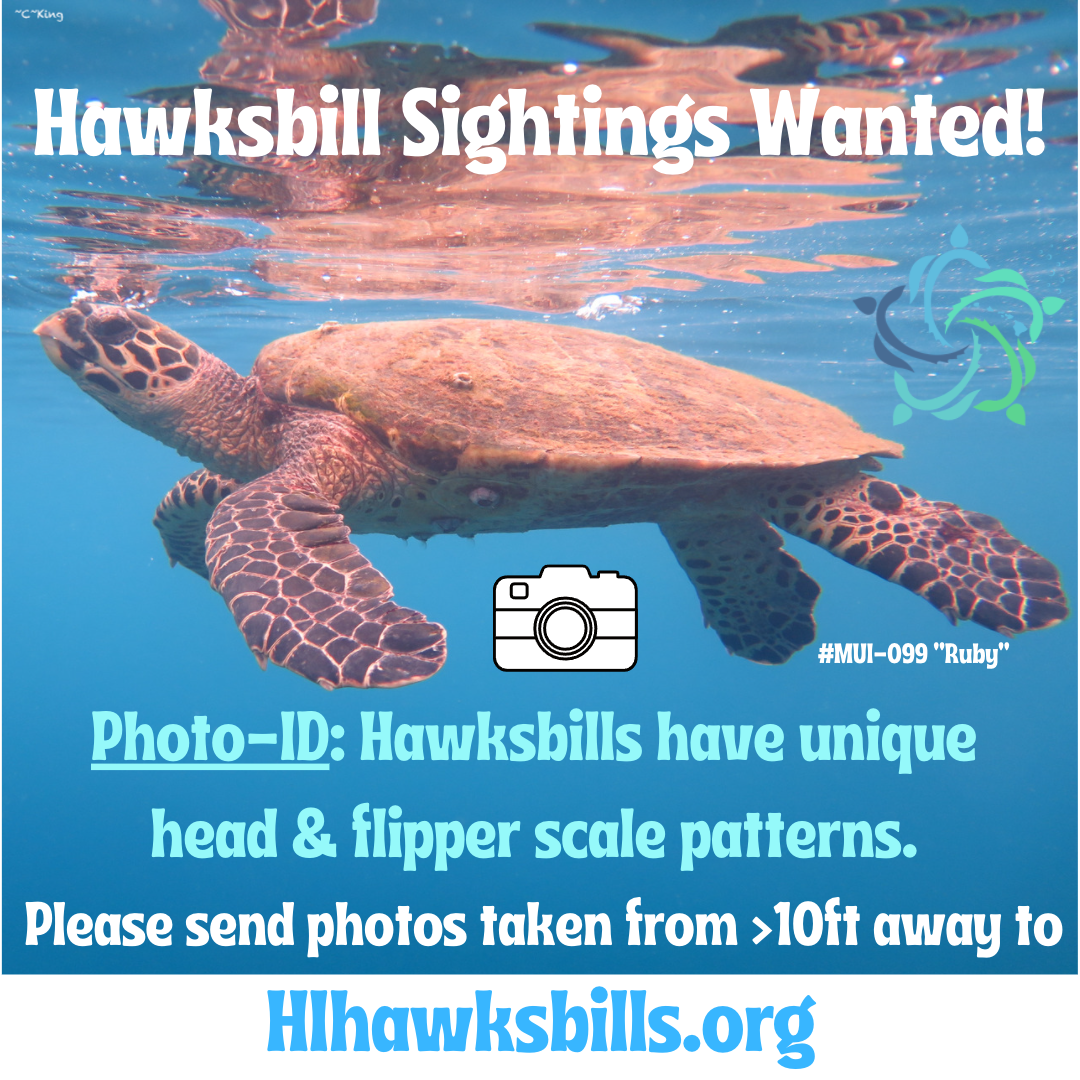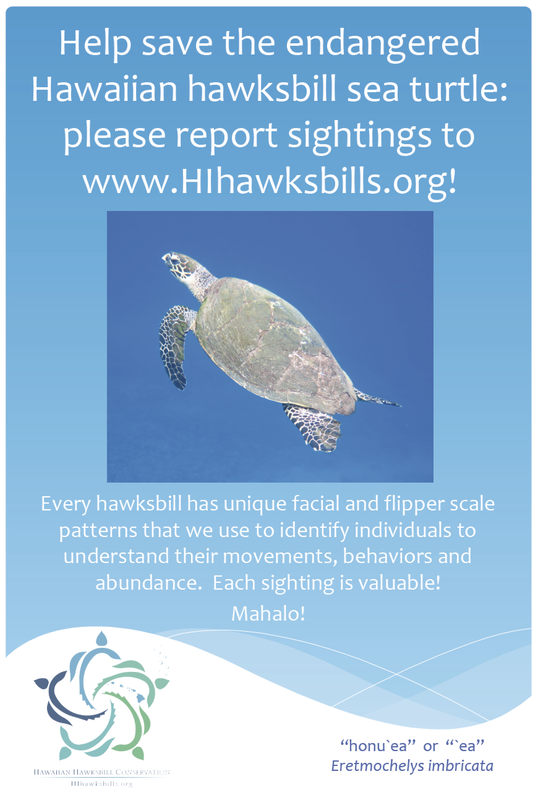Photographic Identification
(Photo-ID or PID)
(Photo-ID or PID)
"Every scale tells a tale!"
How does it work?Each sea turtle has their own unique arrangement of scales on their head and flippers (like a fingerprint), so they can be monitored over time simply by photographing them. This is a very non-invasive way of learning a lot about them.
Some have only been seen once, but we have “known” many of these hawksbills for years. You will significantly contribute to this research by attaching them with your report form, emailing your photographs directly, by sending links to online sightings, or by tagging #HIhawksbills on social media. You can match your photographs yourself too, by comparing your photos to each hawksbill, arranged by island. Please keep in mind that:
|
If your sighting is confirmed to be a new hawksbill to the catalog, you get the opportunity to name it! If choosing Hawaiian names, this site is recommended: www.wehewehe.org You will always receive photo credit if your photo is used. Your name will be listed under the "Sighted By" category in each hawksbill's profile that you submit photos of. The subsequent listing of other people's names by year will indicate other sightings, but location-information won't be included online. Contact me for specific information. You can choose to receive our "Hawaiian Hawksbill Happenings" e-newsletters to keep you up-to-date. |
The Trouble with TaggingTrained researchers (with State and Federal endangered species permits) tag sea turtles with metal flipper tags that have a unique combination of letters and numbers. While this method is often helpful for tracking purposes, it comes with limitations like anything else (tag loss, epibiont growth, having to be super close to the animal to read the tags, potential injury, tags may create entanglement hazards, etc.).
We do not encourage people to closely approach sea turtles to read their flipper tags (which can be on each front and rear flipper), since that can be challenging and any disturbance of the animal is illegal. Instead, please take photographs/video and note the turtle's location so we can help identify the turtle that way since we're collaborating with the few researchers who are tagging Hawaiian sea turtles. We also typically use internal P.I.T. (passive integrated transponder) tags, like pet dogs and cats receive, that you can't see. While these are shown to last longer, they can only be read on land with special scanners. Photo-ID is an alternative research tool that is also helping us learn more about this critically endangered species! |
Please report any tagged Hawaiian green sea turtles (including ones with painted letters/numbers on their carapaces) to NOAA:
[email protected]
On Maui, click below for Maui Ocean Center Marine Institute's tagged green sea turtle report form:
Click to read our September-October 2019 Ke Ola magazine article
Sightings from
|
392 hawksbillsAll unique individuals are given numbers and names to monitor them over time. We've seen some over 100 times each, and one for a 18-year timespan!
• Pelagic Phase • Juveniles • Subadults • Adult Females • Adult Males Note that the deceased hawksbills are still included in the catalog. |
The Hawaiian Islands• See the "Meet the Turtles" island-specific pages for complete information, but the majority of the sightings are from Maui (where I live).
• Our "Hawaiian Hawksbill Hui" is a statewide network of government agencies, conservation NGOs, ocean user groups, plus concerned community members. Join us! |
>500 photographers• I can't thank everyone enough for contributing so much to this project over the decades!
|
Want to help spread the word about hawksbills?
Here's a postcard that can be printed and distributed to people all around Hawai`i:
| hawksbillsightingspostcard_cking.pdf | |
| File Size: | 864 kb |
| File Type: | |
Here's a poster:
| hawksbillsightingsposter20x30_cking.pdf | |
| File Size: | 1321 kb |
| File Type: | |

